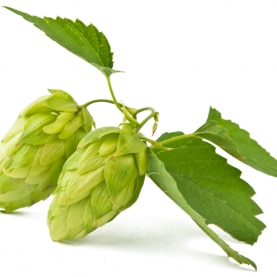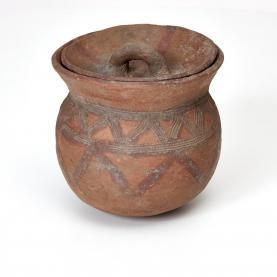Beer
Beer is the world’s oldest fermented drink. Its production entails several phases, the three most important of which are malting (germination of the barley), brewing (transformation of the starch into sugar) and fermentation (transformation of the sugars into alcohol and carbon dioxide). Industrial breweries developed in the 20th century and then the 1980s saw growing enthusiasm for craft beer, encouraging the development of small and medium-sized breweries and of different flavours of beer.
Beer, a Neolithic discovery
Beer was discovered around 4000 BCE when cereal cultivation began in the Middle East. Barley was one of the first cereals to be cultivated and was stored in earthenware jars of water. The grains developed fermentable sugars that gradually developed into beer, known in Mesopotamia as sikaru. In ancient Egypt, this drink was seasoned with ginger, honey, mint, marjoram, parsley, lupine or saffron.
From malting barley grains to fermentation of the wort
Beer production involves three important phases: malting (germination of the barley), brewing (transformation of the starch into sugar) and fermentation (transformation of the sugars into alcohol and carbon dioxide).
Barley is the raw material in beer. Malting consists of transforming the grains of barley into malt, by germination for them to produce certain enzymes necessary for the saccharification of the starch. In order to do this, the grains of barley are soaked in water at a temperature between 12°C and 14°C for one or two days. The grains are then spread out on a board to be aired, moistened and kept at a temperature between 12°C and 14°C for four to eight days. The germinated grains are then dried spread out on perforated trays through which hot air circulates. They are stirred and heated at different temperatures depending on the type of beer sought (pale, amber, caramel or dark).
Brewing follows malting. After the non-germinated grains have been removed, the malt is cleaned, ground in a crusher and mixed with water. This mixture, known as ‘mash’, is heated to convert the starch into soluble and fermentable sugar, producing wort. The latter is filtered to remove any residues of malt, then boiled with hops. Sugar or spices may be added for some types of beer. The aim of cooking is to destroy the enzymes (proteins that accelerate a biochemical reaction), as well as to concentrate, sterilise and aromatise the wort. After reaching boiling point, the hops are removed and the wort is put to cool in a cooling tank at 65°C.
The wort is poured into a vat in the fermentation cellar and yeast is added. The sugars are converted into alcohol and carbonic acid (carbon dioxide dissolved in water). High fermentation involves the use of ‘high yeast’, which stays on the top of the wort, kept between 15°C and 25°C for three days. In low fermentation, the ‘low yeast’ stays at the bottom of the vat, and the wort rests between 6°C and 10°C for seven to ten days, or even longer for beers for keeping. During this phase, the wort becomes a young beer, which still has to mature at a low temperature in the maturing cellar for between fifteen days and three months. During this stage of renewed fermentation, the beer is naturally saturated with carbonic acid, clarifies and develops a more pronounced taste. Carbon dioxide may also be added directly.
After fermentation, the beer is prepared to be sold in kegs, bottles or cans. This process is called racking, during which carbon dioxide is added to produce a sparkling beer. Unlike keg beer, bottled beer is generally pasteurised.
Three types of beer
There are four main types of beer, depending on the type of fermentation, which may be high, low, spontaneous or mixed (brewed using high and low fermentation in succession). Spontaneous beers or lambics are 60% malted barley and 40% malt from wheat or corn, which can take five months to a year to ferment. Lambics have a very hoppy wort and are sparkling owing to the yeast added when it is bottled. To make Kriek lambic, a style of Belgian beer, the brewers macerate cherries in it during the period of storage, producing both a sweet and tangy taste.
D’EER, Mario, 1998. Ales, Lagers et Lambics, La bière. Montréal : Trécarré/Bièremag.
VITAUX, Jean, FRANCE, Benoît, 2008. Bière. Dictionnaire du gastronome. Paris : Presses universitaires de France. pp. 101-103.









